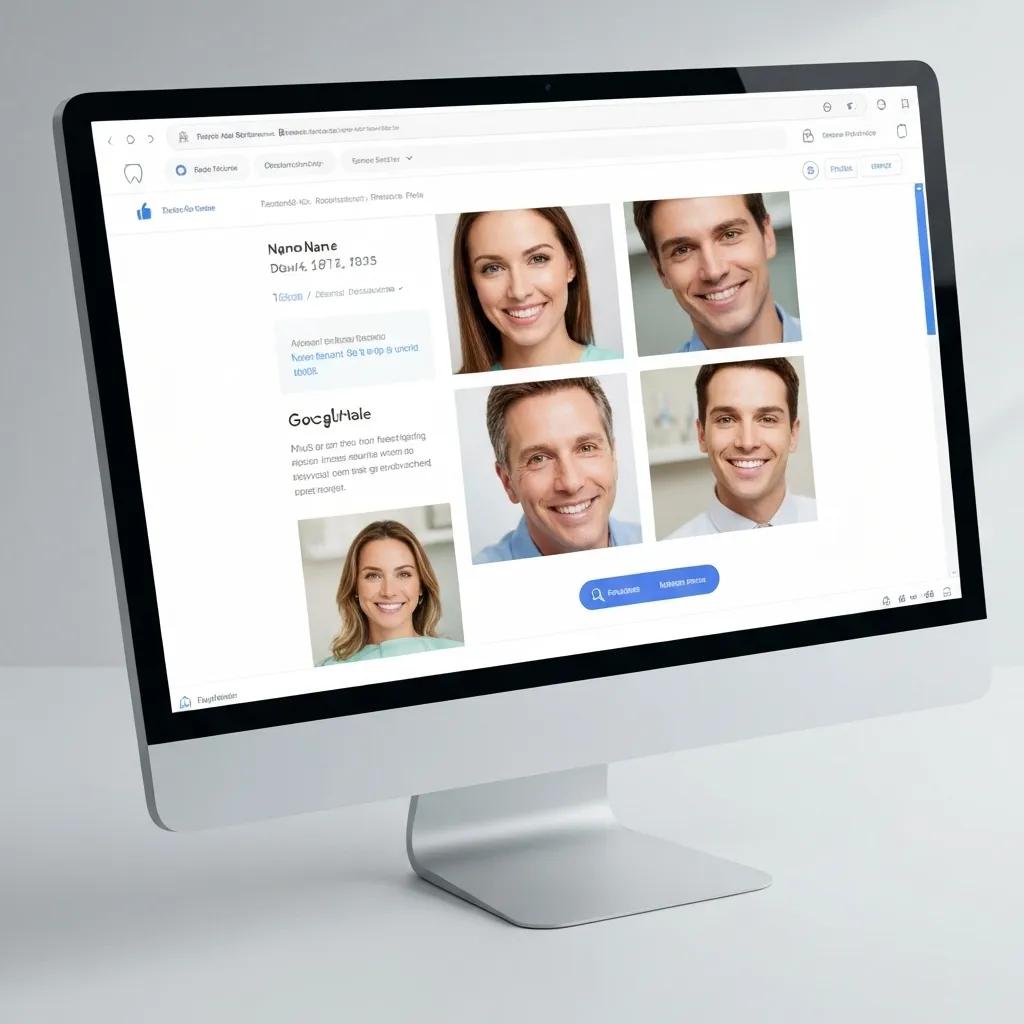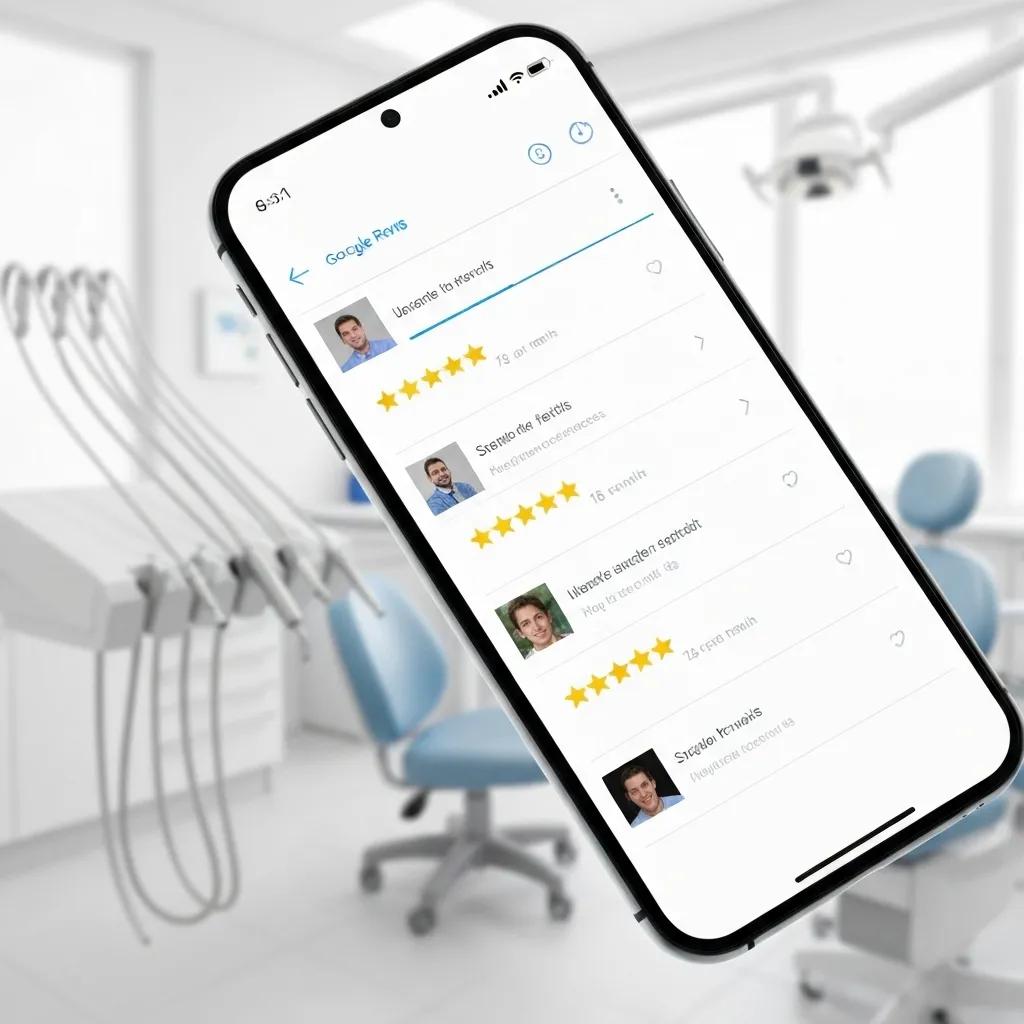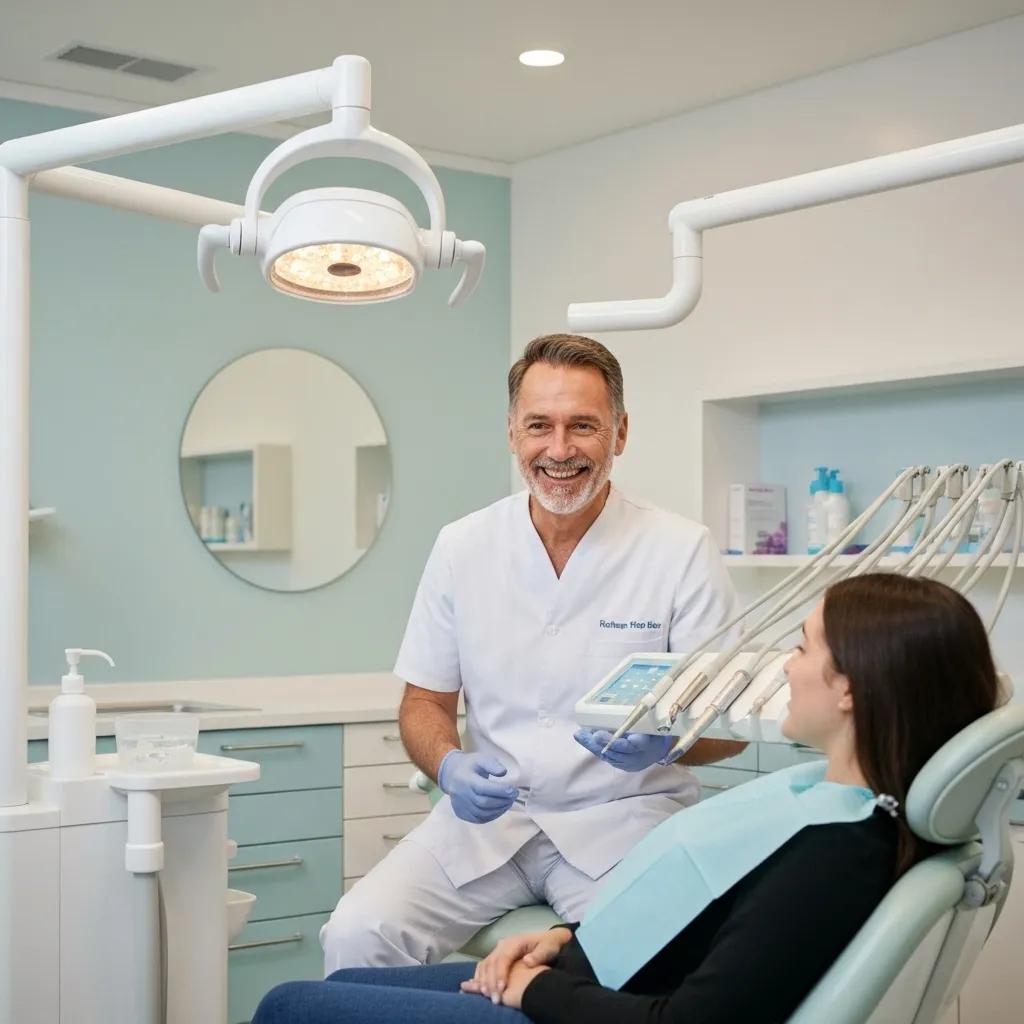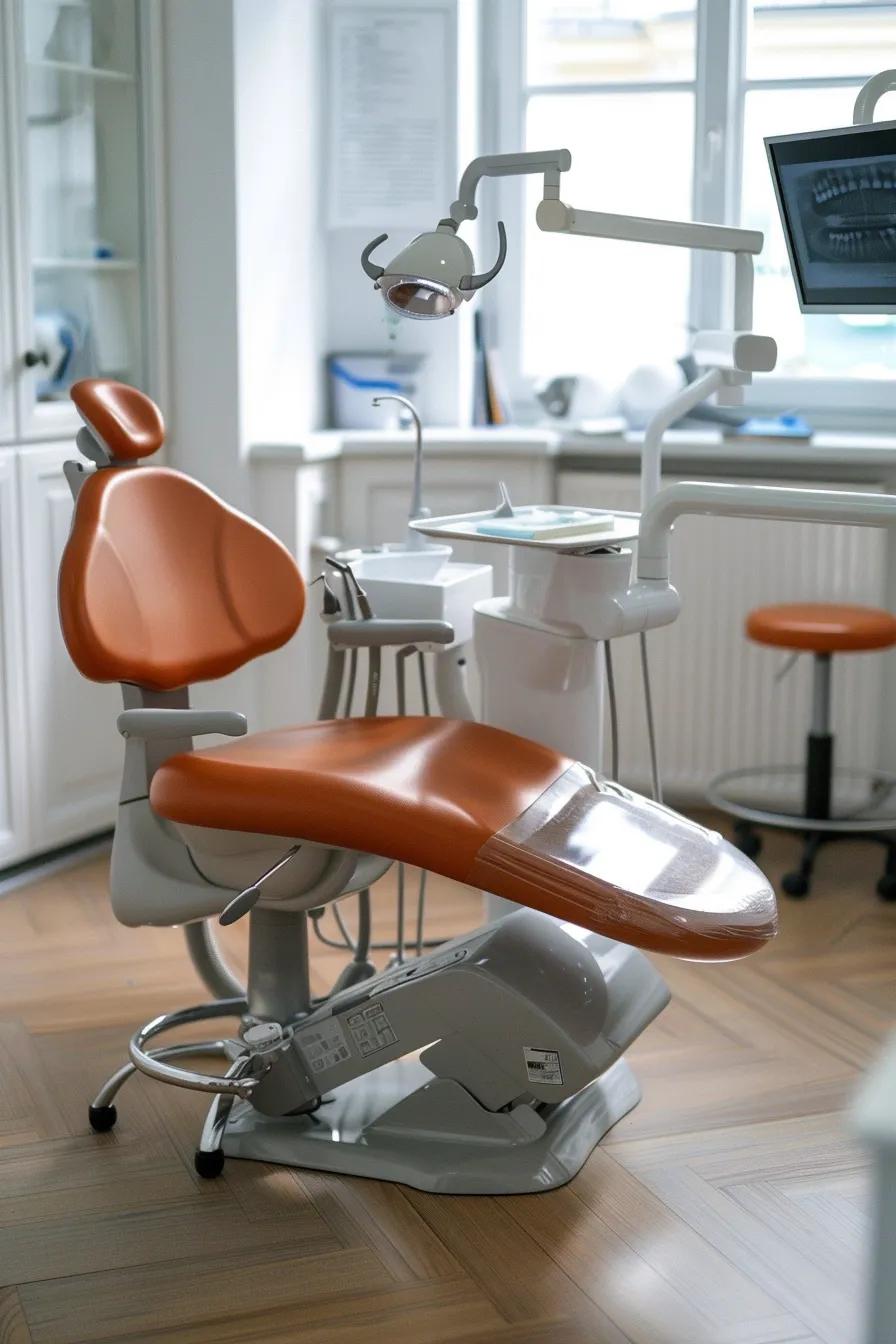Supercharge Patient Growth: Local SEO for Australian Dental Practices
Australian dental practices really hit their stride when they’re front and centre in local search results. And for good reason – a massive 70 percent of Aussies scout online for dental services before booking. This guide is your secret weapon, packed with tried-and-true local SEO strategies tailor-made for dentists. We’ll show you how to supercharge your profiles, master your online reputation, nail your keyword research, fine-tune your website, build solid citations, and deploy some clever advanced moves to seriously ramp up your patient numbers. You’ll discover:
- Why local SEO is an absolute game-changer for Australian dentists and the awesome perks it brings.
- How to absolutely nail your Google Business Profile optimisation to own those local search results.
- Reputation management tricks that build heaps of trust and send your search rankings sky-high.
- Smart ways to uncover local keywords, polish up your website, and get your citations sorted.
- Next-level techniques like AI, targeted ads, and content marketing to keep your practice booming.
Follow these practical steps, and your practice will be outshining the competition, attracting a steady stream of new patients, and becoming the go-to dental expert in your neighbourhood.
Why Local SEO is a Must-Have for Australian Dentists
Local SEO puts your dental practice right in front of patients who are actively searching for your services, perfectly matching your online presence with what people are looking for nearby. For Australian dentists, this means instant visibility in local search results, a massive boost in trust, and a consistent flow of appointment requests – all crucial in a market with over 20,000 practices.
What Are the Big Wins of Local SEO for Dental Practices?
- Pinpoint Visibility: Get your practice seen in Google’s local results for searches like “dentist near me.”
- Patient Confidence: Build trust with verified business profiles and genuine patient reviews.
- More Bookings: Local searchers are often ready to book straight away, leading to higher conversion rates.
- Stand Out from the Crowd: Gain a competitive edge in busy areas by outranking practices that aren’t optimised.
These advantages directly translate into more new patient enquiries and a healthier bottom line, giving dentists the confidence to invest in their long-term marketing future.
How Do Australian Patient Search Habits Shape Dental Local SEO?
Over 80 percent of Australian dental patients kick off their search on Google, usually on their mobile phones. Mobile searches for things like “emergency dentist Melbourne” often surge outside of business hours, showing urgent needs. This mobile-first behaviour means you absolutely need a website that works brilliantly on phones, loads super fast, and has up-to-the-minute business details to turn those searchers into callers before they click on another practice.
Australian Patient Search Behaviour and Google’s Dominance in Dental Care
Research shows that a huge number of Australians turn to Google when searching for health information, with Google holding over 93% of the search engine market share in Australia as of July 2024. Mobile devices are the go-to for these searches, with Google dominating nearly 99% of the mobile search market. What’s more, a significant portion of potential patients do their homework online before booking dental appointments, with some studies indicating that over 80% of patients consider online reviews when choosing a healthcare provider.
This data strongly backs up the article’s points about how often Australians search online for dental services, Google’s massive market share, and why having a mobile-friendly presence is key to reaching potential patients.
What Market Shifts Are Affecting Local Visibility for Dental Practices?
- Embracing Digital Dentistry: Practices offering teledentistry and advanced imaging attract more clicks from patients keen on new tech.
- AI for Patient Engagement: Smart chatbots and virtual assistants speed up responses and boost patient interaction.
- Ramping Up Competition: Clinics in urban areas are fighting hard for those top local spots, making niche keywords and hyper-local content absolutely essential.
Staying on top of these trends ensures your practice remains visible and relevant as patient expectations continue to evolve.
Mastering Your Google Business Profile for Local Dental Search

A finely tuned Google Business Profile (GBP) is the bedrock of local SEO, providing search engines and patients with accurate, trustworthy details. Claiming, verifying, and fleshing out your profile signals your authority and relevance for local searches, significantly boosting your visibility in those coveted map results.
What Are the Essential Steps to Claim and Verify Your Google Business Profile?
- First, log in to the Google account linked to your practice’s address and:
- Search for your practice name on Google Business Profile.
- Click “Own this business?” and follow the prompts.
- Select your preferred verification method (postcard, phone, or email).
- Keep an eye out for the verification code and enter it as soon as you receive it.
Once verified, your practice is officially recognised as a local business, unlocking all the profile management tools you need to optimise it further.
How to Perfect NAP, Categories, and Services for Dentists on GBP?
Keeping your Name, Address, and Phone number (NAP) consistent across all your online listings is vital for solidifying your location data. To really dial in your GBP details:
| Business Element | Best Practice | Smart Tip |
|---|---|---|
| Name | Your practice’s official trading name | Avoid stuffing slogans or keywords into your official name |
| Address | Your full street address | Ensure it matches your local utility bills and directory listings precisely |
| Phone | Your main practice phone number | Use a local area code to clearly signal your geographic focus |
| Categories | “Dentist” plus any specialist categories | Add “Cosmetic Dentist” or “Orthodontist” if these apply to your services |
| Services | List all the core dental treatments you offer | Be specific, like “Teeth Whitening,” “Emergency Extractions” |
How Can Google Posts, Photos, and Q&A Boost Your Local Ranking?
Regularly posting Google Posts about special offers, blog articles, or patient tips keeps your profile fresh and encourages clicks. Uploading high-quality photos of your clinic, your team, and successful treatments builds confidence. Actively monitoring and answering Questions & Answers shows you’re responsive. Together, these interactive elements signal to Google’s algorithm that your profile is active and valuable, improving your local ranking potential.
What Are the Top Tips for Managing Google Reviews on Your Profile?

- Gently encourage feedback through post-appointment follow-ups and in-practice prompts.
- Respond to every single review within 48 hours, acknowledging positive comments and thoughtfully addressing any concerns.
- Encourage patients to mention specific treatments they received, which enriches review content with relevant keywords.
A higher volume of detailed, positive reviews boosts your star rating and local pack position, drawing in more potential patients.
Nailing Online Reputation Management for Dental Practices
Cultivating and maintaining a stellar online reputation is fundamental for building patient trust and achieving strong search performance. Reviews act as powerful social proof, influencing patient decisions and prompting search engines to favour reputable practices.
How Can You Effectively Encourage and Gather Patient Reviews?
- Automate Requests: Send out review prompts via SMS or email shortly after appointments.
- Personalise Your Asks: Make invitations feel special by mentioning the specific treatments they received.
- Provide Clear Guidance: Offer simple, step-by-step instructions on how to leave a Google review.
These methods not only increase the number of reviews you receive but also ensure the feedback genuinely reflects patient experiences, creating valuable fresh content that search algorithms love.
What Are the Best Ways to Respond to Both Positive and Negative Reviews?
Always aim for responses that are:
- Quick – Show your patients their feedback is valued immediately.
- Professional – Maintain a helpful and empathetic tone, especially with negative feedback.
- Informative – Reference specific treatments or practitioner roles (e.g., “Dr Smith founded our clinic with a passion for…”).
Thoughtful replies build patient loyalty and demonstrate your commitment to ongoing improvement, reinforcing trust signals for both potential patients and search engines.
Which Review Platforms Should Australian Dentists Focus On?
- Google Reviews
- HealthEngine
- Yelp
Having a strong presence on these key platforms ensures you’re visible across important patient touchpoints, consolidating feedback and strengthening the local signals that drive search rankings.
How Does Your Online Reputation Impact Local SEO and Patient Trust?
A strong reputation creates a positive feedback loop: more glowing reviews lead to better star ratings, which in turn attract more clicks and bookings. Search engines notice this and favour high-trust profiles in local search results, while potential patients feel more confident choosing your practice thanks to consistent, credible social proof.
Top Local Keyword Research Strategies for Dentists
Using the right keywords connects your practice’s content with what patients are actually searching for, bridging the gap between online discovery and booking appointments. By incorporating geo-modified and long-tail phrases, you can capture both broad and highly specific local search intent.
How to Find Geo-Modified and Long-Tail Keywords for Dental Practices?
Geo-locational keywords combine service terms with suburb or city names, while long-tail phrases capture more detailed searcher intent. Think along these lines:
| Keyword Example | What it Means | Why it Works |
|---|---|---|
| dentist Sydney CBD | Searching for a dentist in a specific city centre location | Targets people looking for convenience during their workday in the CBD |
| affordable root canal Brunswick | Looking for a specific treatment, price point, and suburb | Attracts patients who are budget-conscious and live in or near Brunswick |
| emergency wisdom teeth removal | Urgent need for a specific dental procedure | Captures high-urgency searches that are likely to convert into immediate calls |
How to Analyse Competitor Keywords in the Australian Dental Scene?
Leverage SEO tools to uncover the keywords your top competitors are ranking for, then:
- Spot the popular phrases they’re targeting.
- Identify any gaps where competitors might be missing opportunities in certain suburbs or specialities.
- Adapt successful competitor keywords into your own optimised website content.
This smart analysis helps you find ways to get ahead by addressing patient needs that your rivals might be overlooking.
How to Match Keywords to User Intent: Informational vs. Commercial?
Categorise your keywords into:
- Informational (e.g., “how to stop teeth grinding”) – Perfect for your blog and patient education resources.
- Commercial (e.g., “book dental implants Melbourne”) – Best suited for your service pages and calls to action for appointments.
Aligning keywords with user intent ensures your content effectively educates and converts visitors, maximising your SEO impact and generating more patient leads.
Optimising Your Dental Website for Local Search Visibility
A well-optimised website boosts your practice’s local authority and provides a smooth, user-friendly experience for potential patients. Technical and on-page SEO elements work together to align your site with local search signals.
What On-Page SEO Elements Are Essential for Dental Local SEO?
| Element | What it Is | Local Angle |
|---|---|---|
| Title Tag | Your page’s main title, including a geo-modified keyword | “Sydney CBD Dentist – Smile Dental Clinic” |
| Meta Description | A short summary with a clear call-to-action | “Book your teeth whitening appointment today near you…” |
| Header Tags (H1–H3) | Headings that structure your content for easy reading | Incorporate suburb names and specific service terms |
| Body Content | Informative text packed with relevant local keywords | Talk about benefits for local patients and share success stories |
| Image Alt Text | Descriptive text for your images | “Teeth whitening procedure at our Melbourne clinic” |
How Do Mobile Responsiveness and Site Speed Impact Local Rankings?
Google prioritises websites that load quickly on smartphones, thanks to mobile-first indexing. Even a few extra seconds of loading time can cause a 20 percent drop in engagement. Making sure your website is responsive and your images are optimised keeps potential patients on your site long enough to find your contact details and book an appointment.
How Online Reputation and Website Performance Drive Dental Practice Growth
Your online reputation, especially patient reviews, is a massive factor in attracting new dental patients. Studies show that 84% of patients research dental practices online before their first visit, and a significant 73% rely on reviews to make their decision. On top of that, how well your website performs – including its mobile-friendliness and page load speed – has a major impact on your local search rankings and how engaged users are. Slow websites can lead to a noticeable drop in engagement, with some dental sites seeing a 25% decrease simply due to poor speed.
This information strongly supports the article’s focus on reputation management, the power of positive reviews for patient trust and bookings, and the absolute necessity of a fast, mobile-friendly website for maintaining local search visibility and keeping patients engaged.
How to Implement Schema Markup for Dentists and Dental Services?
Adding schema markup, like and , helps search engines understand your practice details more accurately. Be sure to include:
- name, address, telephone
- openingHours, priceRange
- servesCuisine (which you’d adapt to makesOffer for services)
- aggregateRating and reviewCount
Precise schema signals improve your chances of appearing in rich snippets and Knowledge Panels within local search results.
How to Embed Google Maps and Local Signals on Your Website?
Including a Google Maps iframe showing your practice location provides a direct local signal. Enhance this with:
- A “Find Us” section with a link to directions.
These elements reinforce your geographic relevance and make it super easy for patients to find and trust your practice.
Building Local Citations and Backlinks for Dental Clinics
Local citations and backlinks from trusted directories significantly boost your practice’s authority, credibility, and visibility in local search algorithms.
Why Is NAP Consistency So Important Across Local Directories?
When your Name, Address, and Phone information is inconsistent across different online listings, it sends mixed signals to search engines, confusing them. Having uniform NAP details across all directories:
- Confirms your business identity.
- Improves the reliability of your local indexing.
- Builds authority when it’s consistently found on high-trust websites.
Maintaining accuracy in every listing ensures coherent local signals that contribute to better rankings.
Which Top Australian Directories Should Dentists Be Listed On?
- True Local
- Yellow Pages
- Australian Dental Association directory
These directories have high domain authority and signal credibility when your practice is listed alongside other respected healthcare providers.
How to Conduct Citation Audits and Fix Any Errors?
- Export all your existing citations into a spreadsheet.
- Carefully compare each entry against your current, correct NAP details.
- Submit requests to update or correct any directories with outdated information.
Regularly checking and maintaining your citations ensures your practice maintains strong local authority and avoids potential ranking issues caused by conflicting data.
Advanced Local SEO Strategies for Dental Practice Growth
Cutting-edge tactics like AI, paid advertising, social media engagement, and content marketing help forward-thinking dental clinics stand out and achieve sustained growth beyond the basics of local SEO.
How Can AI and Automation Supercharge Dental Marketing?
AI-powered chatbots can instantly handle patient enquiries, guiding them towards booking appointments or finding service information. Automated data analysis can predict busy periods for cosmetic treatments, allowing for targeted marketing campaigns that are more efficient than traditional scheduling methods.
What Role Do Geo-Targeted PPC Campaigns Play in Attracting Local Patients?
Geo-targeted pay-per-click (PPC) ads let dentists focus their bidding efforts exclusively on specific suburbs, making their budget go further and reaching potential patients exactly when they need them. These campaigns complement organic SEO by capturing traffic for highly competitive keywords that might take longer to rank for naturally.
How to Use Social Media and Email Marketing for Patient Retention?
Consistent email newsletters sharing practice updates, special offers, and oral health tips help nurture relationships with existing patients. Tailored social media posts – featuring community events, patient success stories, and behind-the-scenes glimpses of the clinic – keep your brand memorable and encourage repeat visits.
How Does Content Marketing Build Authority and Trust for Dentists?
Publishing informative blog posts on topics like oral hygiene tips, treatment explanations, and patient case studies positions your practice as a knowledgeable leader. In-depth articles answer common patient questions, attract valuable backlinks from health-related websites, and provide engaging content for social media, all reinforcing your authority within the local dental community.
Measuring and Monitoring Success in Dental Local SEO Campaigns
Keeping an eye on key performance metrics ensures your local SEO efforts are actually driving patient growth and delivering a return on investment. Regular analysis allows you to fine-tune your strategies for continuous improvement.
What Key Metrics Should Dentists Track for Local SEO Performance?
- Local Pack Rankings for your most important geo-modified keywords.
- GBP Insights, including how many people viewed your profile, clicked through, called, or requested directions.
- Organic Traffic from Local Searches, broken down by geographic area.
- Review Volume and Average Star Rating across all platforms.
These metrics show you how effectively your practice is connecting with local searchers and highlight areas where you can improve.
How to Link New Patient Enquiries Directly to Local SEO Efforts?
Use dedicated call-tracking numbers for your Google Business Profile and website links. Set up conversion goals in Google Analytics for form submissions and click-to-call actions. This attribution method helps you clearly see how much local SEO is contributing to new patient acquisition, separate from other marketing channels.
Which Tools Are Best for Monitoring Local SEO and Reputation?
- Google Search Console and Google Analytics for tracking organic performance.
- BrightLocal and Semrush Local for citation audits and rank tracking.
- Your Google Business Profile dashboard for direct insights into your listing.
These platforms offer a comprehensive view of your local search signals and reputation metrics.
How Often Should Dental Practices Review and Update Their Local SEO Strategy?
- Monthly: Check your GBP performance, respond to new reviews, and update your posts.
- Quarterly: Conduct citation audits, refresh your keyword research, and assess your backlink profile.
- Annually: Re-evaluate your overall strategy, implement any new advanced tactics, and benchmark your performance against competitors.
Regular reviews keep your practice at the forefront of local search trends and evolving patient expectations.
Getting new patients really comes down to being easy to find, trustworthy, and engaging in local search. By putting these strategies into action – from perfecting your Google Business Profile and mastering reputation management to smart keyword research, website optimisation, and advanced AI tactics – your dental practice can absolutely dominate local search results and attract a consistent stream of new patients. Keep monitoring and adapting, and your marketing efforts will stay in sync with patient behaviour and tech advancements, cementing your clinic as a trusted local favourite and driving lasting growth.



